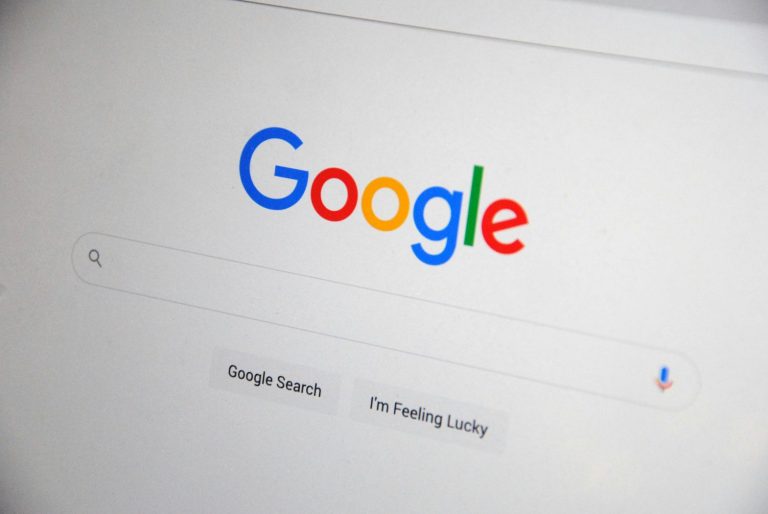[Last Updated: 9th April 2025]
Wondering whether there’s a limit to the ideal meta description length?
If you’re searching for an answer to ‘How long should a meta description be?’, you’ve come to the right place.
At Aqueous Digital, we have years of invaluable experience supporting our clients with expert Search Engine Optimisation (SEO) services – including the creation of high-quality content and attention-grabbing meta descriptions.
What is a meta description?
First off, let’s explain briefly what a meta description is and why it matters.
In short, a meta description is a summary of a page’s content that appears in the SERPs (Search Engine Result Pages).
These descriptions play an important role in encouraging online users to navigate to your website.
How long is a meta description?
Technically, meta descriptions can be any length.
However, to prevent websites from taking up the entire SERP, search engines like Google shorten these descriptions.
This means you’ll typically see just one to two lines of meta description content underneath the webpage title on the SERP.
Can meta description have maximum 255 characters?
At the beginning of 2017, Google had a meta description character limit of 275 characters.
However, Google constantly changes where and how much content appears online, so this ideal SEO meta description length has varied previously and continues to change.
What is the maximum character count for meta description?
While there’s no specific meta description character limit, you can create longer meta descriptions between 255-300 characters if you want to include more information.
It’s worth nothing, however, that not all the description will be shown on the SERP because the meta description character limit is now lower than that.
What is the ideal meta title length?
Searching for the ideal meta description length? According to Google’s most recent guidelines, the best length for a meta description is between 155-160 characters.
Abiding by this ideal SEO meta description length ensures the description can include enough information to be useful to the user.
While 155-160 characters is the current ideal meta description length, it may not remain this way.
Without warning, Google has been known to change the optimal length for a meta description, so it’s worth staying on top of any recent SEO changes and Google updates.
Does a long meta description affect SEO?
Regardless of how long, or short, your meta description is, it’s unlikely that it will significantly affect your SEO efforts.
This is because Google no longer uses meta descriptions as a ranking factor, so adding in a meta description, no matter its length, won’t help you climb those rankings.
However, effective meta descriptions can still be an important part of content creation and SEO best practices.
As one of the first snippets of content an online user sees when using search engines and coming across your pages, they’re essential for encouraging your target market to click onto your webpage.
Ensuring you create a meta description that abides by the 155-160 meta description character limit (and is therefore less likely to be cut short by Google) increases the likelihood of users being able to easily understand the content of the advertised page.
Alternatively, if you decide not to include a meta description, or if Google believes yours isn’t useful, Google may create its own on your behalf.
These Google-generated meta descriptions are designed to help the user identify whether your content is helpful for their specific query, instead of giving a general overview of the entire piece of content.
As a result, if you want more control over the content and length of your webpage meta descriptions, you should make every effort to write your own.
How to write an effective meta description
Alongside length, there’s many other factors that can have an impact on the efficacy of your meta descriptions.
To support your meta description creation process, we’ve put together our top five tips below.
1. Keep the content unique
Even if you have similar product or service pages, crafting a unique meta description for each one is essential to avoiding duplicate descriptions and encouraging online users to click-through to the page.
2. Add a relevant keyword or phrase
Instead of cramming as many keywords into this small space as possible, it’s actually more effective to pick just one relevant keyword or phrase. This approach will highlight the main focus and intent of the page to both search engines and online users.
3. Stay within the 155–160-character limit
Keeping your meta description within the 155-160-character limit will ensure you make the most of this crucial opportunity to connect with online users. Staying under 160 characters will also prevent your description from being cut short by Google.
4. Include a Call-to-Action (CTA)
For the best results, a strong CTA is recommended in every meta description. Whether you want the online user to give you a call, book a consultation, or browse your online selection of products, this is the perfect place to encourage the user to engage with your business.
5. Address the user intent
The key to a good meta description is by connecting with the search intent of your ideal customer. For example, whether they want to purchase a product or service, learn more, or explore their options. Depending on their needs, they may want a free, no-obligation quotation or to get a better understanding of how a service works.
Alternatively, they might be interested in the range of products (be it colour, size, brand, etc.) available. Once you’ve identified their intent, you should focus on writing meta descriptions that clearly demonstrate your understanding of what your target audience is looking for.
Common meta description mistakes to avoid
To further increase your chances of meta description success, we identify some of the most common mistakes websites make and how you can avoid following suit.
Keyword stuffing
To ensure both search engines and online users can easily determine the focus of your page, we recommend picking just one primary keyword or phrase to include in your meta description.
Too long
If you’d like to prevent your meta description from being cut off in the SERPs, it’s important to stay below the maximum 160-character meta description limit.
Too short
Equally, meta descriptions that are too short can mean you’re missing out on an important opportunity to boost your Click-Through Rate (CTR) – the number of clicks your SERP listings receive. As a result, it’s important to ensure your descriptions at least 155 characters in length.
Duplicating descriptions
Duplicate meta descriptions are common for new websites with lots of pages as this practice saves time. While duplicating descriptions won’t affect your SEO rankings, it can have a negative impact on your CTRs as they may not accurately reflect the page content.
Instead, it’s therefore good practice to implement unique meta descriptions across your site.
Missing descriptions
To avoid duplicate meta descriptions, you may be tempted to remove them completely. Just like duplicate descriptions, however, this is a missed opportunity to increase your CTRs, so we recommend taking the time to create strong meta descriptions – especially for key service and product pages.
Meta description examples for high CTR
Looking for some more meta description inspiration before trying your own hand at writing them? We’ve listed a variety of effective meta description examples that can help to boost your CTR – the rate of online users clicking through to your website.
“Interested in a new fitness regime? Find out how our professional team of personal trainers can help you to achieve your health goals this year. Read more here.”
“Perfect your pout today. Browse our wide range of moisturising and pigmented lipsticks from the likes of Rimmel, Fenty, and MAC. Free delivery also available.”
“Offering reliable cleaning services in Cheshire, our fully insured team provide expert housekeeping and contract cleaning. Book your free consultation today.”
How to test and improve your meta descriptions
One of the easiest ways to test and further improve meta descriptions is through A/B testing.
Put simply, A/B testing involves comparing two versions of a component of your site and analysing important metrics, such as their CTR.
For example, you could compare the CTR of two meta descriptions by changing one aspect of them, such as their CTA.
One could be finished with the CTA “give us a call today”, while another could feature the CTA “book your free consultation now”.
After a certain period, the CTR of these two pages can then be compared, giving you a clear idea of which is more effective for grabbing the attention of your online users and boosting your online engagement.
If you require professional help writing meta descriptions and improving the SEO for your website, why not get in touch with Aqueous Digital?
Contact Aqueous Digital today
For expert support creating the ideal meta descriptions that abide by the meta description character limit and grab the attention of your audience, don’t hesitate to contact Aqueous Digital.
Our team of experienced copywriters and SEO account managers has created countless pieces of optimised content for a wide range of businesses, helping them to rank higher where they want to be seen online.
Our organic SEO efforts have delivered impressive results for businesses big and small, could you be next?
To find out more about our range of SEO and marketing services, feel free to discuss your requirements with a member of our team.
To get in touch, you can either call us on 0800 285 1424, submit your enquiry to hello@aqueous-digital.co.uk, or use our convenient online contact form.
However you decide to get in contact, rest assured, we’ll be in touch shortly to schedule your free, no-obligation consultation!





